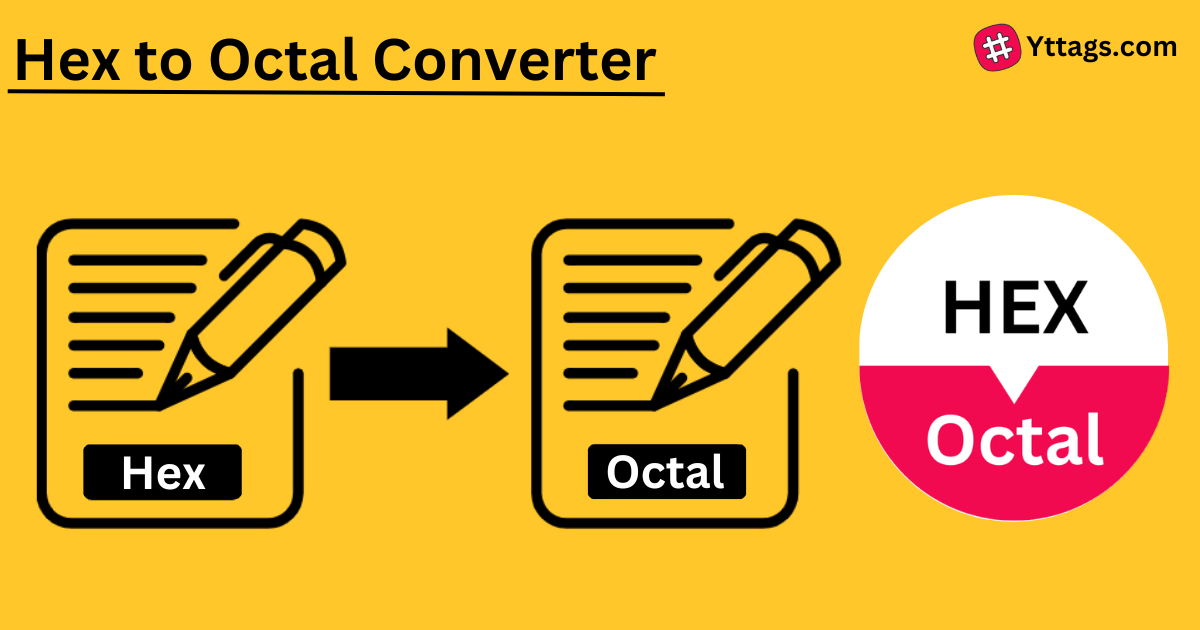Hexadecimal to Octal Converter
Hexadecimal to Octal Converter converts the hex numbers (base-16) to Octal Numbers (base-8).
This tool is helpful for hexadecimal to Octal conversion in computer programming.

If you use this great tool then please comment and/or like this page.
Average Rating: Tool Views: 330
Average Rating: Tool Views: 330
Subscribe for Latest Tools
How to use this Hexadecimal to Octal Converter Tool?
How to use Yttags's Hexadecimal to Octal Converter?
- Step 1: Select the Tool

- Step 2: Enter Hexadecimal Text And Click On Convert Button

- Step 3: Check Your Hexadecimal to Octal Converter Result

If you want to link to Hex To Octal page, please use the codes provided below!

FAQs for Hexadecimal to Octal Converter
What is a Hexadecimal to Octal Converter?
A Hexadecimal to Octal Converter is a tool that converts numbers from the hexadecimal (base-16) numeral system to the octal (base-8) numeral system, allowing for the transformation of numerical representations between these two bases.
Can we convert hexadecimal to octal directly?
Conversion of hexadecimal to octal cannot be done directly. Firstly we need to convert hexadecimal into its equivalent decimal number then decimal to octal.
What is the advantage of hexadecimal over octal?
This representation offers no way to easily read the most significant byte, because it's smeared over four octal digits. Therefore, hexadecimal is more commonly used in programming languages today, since two hexadecimal digits exactly specify one byte. As said before, everything is stored in binary.
Is it possible to convert octal to hexadecimal?
It is common practice to convert from octal to hexadecimal by first turning the octal number into a binary digit, and then from binary to hexadecimal. To get its hexadecimal equivalent, we now group the four binary bits together. 536 is represented by the hexadecimal value 15E.
Why is octal used?
Octal became widely used in computing when systems such as the UNIVAC 1050, PDP-8, ICL 1900 and IBM mainframes employed 6-bit, 12-bit, 24-bit or 36-bit words. Octal was an ideal abbreviation of binary for these machines because their word size is divisible by three (each octal digit represents three binary digits).